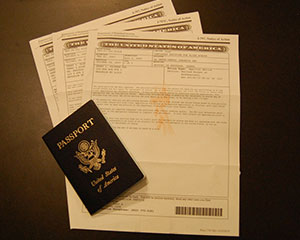When an individual is deported, the government is forcing those to leave against their will. No choices are given whether they can remain in the United States. Generally, the Department of Homeland Security issues deportation orders because the individual has somehow broken the law.
Many people think that if the government places them in deportation proceedings, there is no way they can avoid being deported. However, there are ways to stop deportation that many people do not know about. Prior to April 1, 1997, the effective date of IIRIRA, a form of relief known as “suspension of deportation” was available. Although functionally similar to cancellation relief, suspension had a lower eligibility standard and did not distinguish between lawful and non-lawful resident applicants. However, the eligibility standards for cancellation of removal have become strict after April 1, 1997 by distinguishing between two groups: lawful permanent residence and non-lawful residents.
Types of Cancellation of Removals
For lawful permanent residence (“green card”) holders:
- Pursuant to INA § 240A(a), an individual:
- Must have been a lawful permanent resident for 5 years at the time the application is filed;
- Must have continuous residence in the United States for at least 7 years after being admitted in any status and before the stop-time rule is triggered; and
- Cannot have any aggravated felony conviction.
The application form for LPR-based Cancellation of Removal is the EOIR-42A.
- Pursuant to INA § 212(h), an individual may seek Waiver of Inadmissibility if the person was convicted of a crime involving moral turpitude after the repeal of § 212(c) and also did not accrue the seven years of continuous residence needed for cancellation purposes.
- Some individuals may seek relief under INA § 212(c) and St. Cyr. Such relief is rarely used, but it may apply to those individuals who were permanent residents at the time of their plea, so long as the offense was within the scope of 212(c) relief at that time.
For non-permanent residence:
- Pursuant to § 240(A)(b), an individual:
- Must have a lawful permanent resident or United States citizen spouse, parent, or child under age 21 who will suffer exceptional and extremely unusual hardship if the applicant is deported;
- Must have sufficient proof of continuous physical presence in the United States for at least 10 years before the stop-time rule is triggered; individual absences of up to 90 days are permitted, so long as the total is no more than 180 days;
- Cannot have any criminal conviction that renders the applicant deportable or inadmissible; and
- Cannot have any other activities that, when reviewing the record as a whole, would tend to show that the applicant lacked good moral character during the 10 years before the hearing.
The application form for Non-LPR-based Cancellation of Removal is the EOIR-42B.




Leave A Comment
You must be logged in to post a comment.